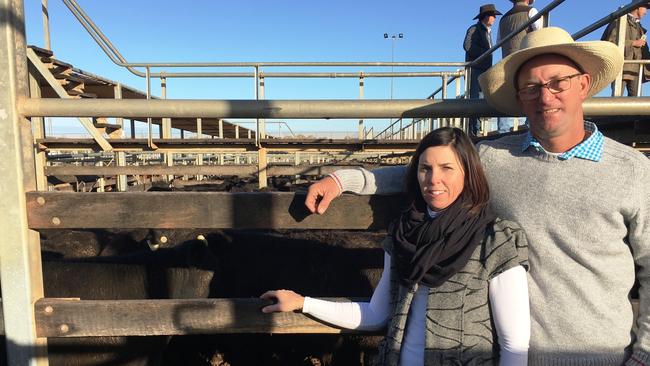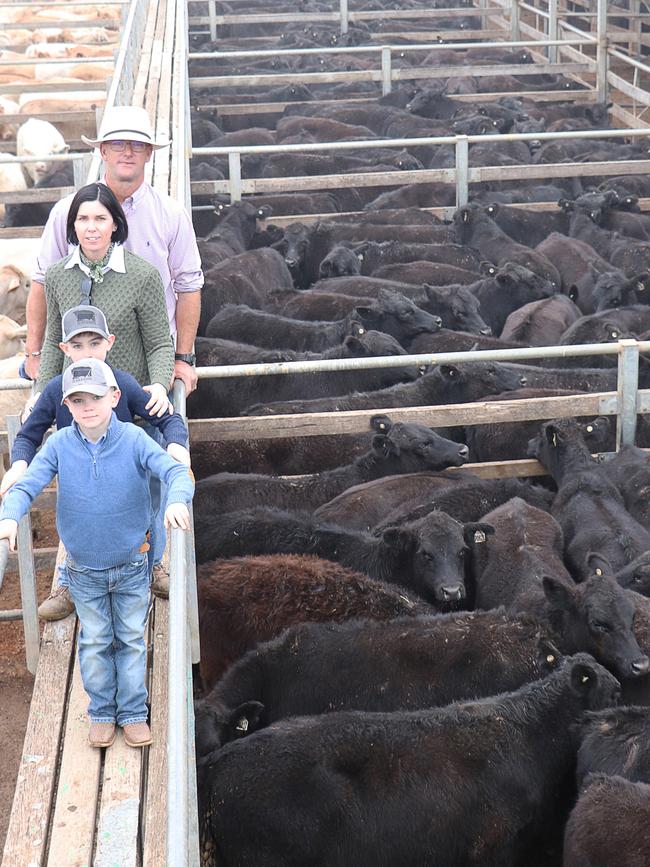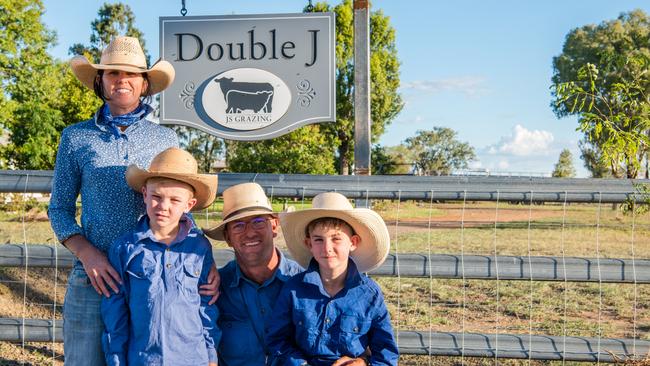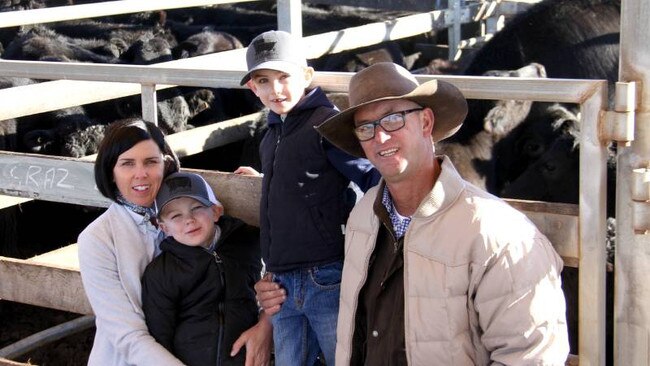JS Grazing: Roma family returns to feedlot after 20 years
Reinstating their on-farm feedlot after 20 years has proved an inspired decision for this Roma family. See how their strategy paid off — big time.
What was old is now new again for JS Grazing’s Jeremy and Julie Shaw.
The Queensland beef farmers from Injune have reinstated their on farm feedlot from 20 years ago and put 500 steers through it in the past two years, with plans to increase numbers to 700 head.
The decision to finish their own calves has enabled the couple to take a strategic step forward financially with the 13- to 18-month-old lotfed steers averaging $10/kg carcass weight and topping at more than $3200 a head.

The Shaws run 1600 Angus breeders and used to sell 80 per cent of their calves in one hit at Roma saleyards each year.
“We restarted the feedlot at the start of 2020. We saw an opening. We did very well with selling weaner steers, but we took the opportunity to take another step in the supply chain and vertically integrate it a bit more you’d say. There’s money in it,” Jeremy said.
“I always said we’d take $1000 and let someone else make the next $400 but we started wanting that next $400 you know.”
MIXING IT UP
The Shaws don’t grow any grain or hay but buy feed from a grain grower and trader at Muckadilla, near Roma in Queensland, and mix their own ration.

In the past few years they have used 300 to 400 tonnes of wheat, 70 to 75 tonnes of cotton seed and two to three road trains of hay in the feedlot and for weaning.
The steers are fed for 80 to 100 days to reach 280kg to 300kg dressed weight and are sold direct to Coles.
“We have a very good working relationship with the Coles buyers up this way, they’ve been great,” Jeremy said.
“They are happy to take our cattle when we have them available. The pricing is good.
“It has been good for us in the last 12 to 18 months.
“We were very lucky when we started when kill cattle really started to heat up.
“We’ve been fortunate to start at the time that we did.”
The Shaws have strong repeat buyer demand for their heifers as breeders so continue to sell those at Roma rather than feeding them on.
The heifer weaners are generally sold from eight to 12 months, 300kg to 320kg liveweight and have averaged about $2500 in recent years.
FUNCTION, FERTILITY
Up to 200 heifers are held back each year for the Shaws own breeding purposes.
They have traditionally had a spring calving herd but in the past 12 months have transitioned to include 400 autumn calvers to spread supply out for the feedlot and make better use of bulls by using them twice a year.
The Shaws have been using bulls from Millah Murrah Angus at Bathurst in NSW since 2011 in both paddock joining and AI programs, paying $40,000 and $30,000 twice for bulls at last year’s sale and averaging $51,000 for three bulls this year.

They strive to maintain a fertile, functional cow herd and achieve calving percentages of 96 to 97 per cent on rangeland country.
There are 40 to 50 bulls that are joined at a ratio of one to 40.
“We’ve been exclusively Millah Murrah for the last 10 to 12 years,” Jeremy said.
“We like everything about them. They are industry leaders and our type of cattle – a good, soft, very even line of cattle, bred to a type, easy doing cattle that produce outstanding results.”
Cows are joined naturally, but heifers are given one round of AI each year.
For the past six years calves have been weaned before sale.
“We bunk train calves and tail them out and they’ve had a lot of handling,” Jeremy said.
“We find it less stressful on ourselves and when it comes to sale time they have been in the paddock for six weeks and people know what they are buying.
“You are not buying something full of milk and have to wean them when you get home.
“Feeding them in the feedlot bunks, that helps when we put our own cattle on feed and they know how to eat.
“It’s pleasing now when you put cattle in the feedlot they go straight onto feed from day one.”
GOOD HEAD START
JS Grazing was initially formed as a family partnership between Jeremy and his parents, Jeff and Jennifer Shaw, who are still involved in the business.
The herd is run over four properties in the Injune district encompassing 9315ha and another 2228ha at Longvale.

Jeremy said they felt fortunate to have taken the reins of a business that was already successful.
“We were lucky to get a head start in that regard. For us, we’ve got a pretty clear idea of where we are going but you have to remain flexible too,” Jeremy said.
“It’s a matter of working towards those goals.”
They are considering more environmental and sustainable options for land management, including carbon sequestration, reducing paddock sizes, increasing water points, monitoring vegetation management practices, and improving the soil to prevent erosion.
“We are in an age where you have to consider all of those things and they will be a big factor in the coming years,” Jeremy said.
The Shaws are looking to increase the scale of their business via increased throughput in the feedlot.
The goal is to produce an animal that is high quality and good eating. “It’s just a matter of how many of them we produce,” Jeremy said.
“We will have to keep more breeders. It’s a numbers game. We would like to feed more steers and obviously the feedlot deal has been good for us at the moment so the more we can put through of our own cattle the better. If we can increase the numbers there it will take our business forward.”




